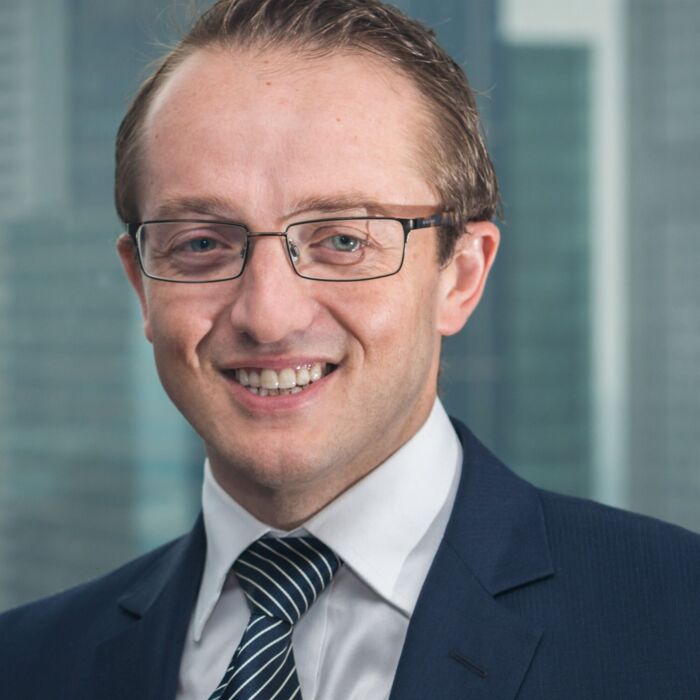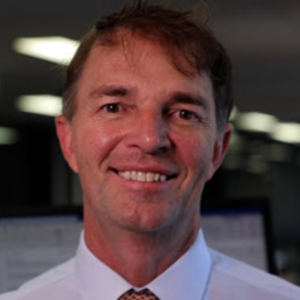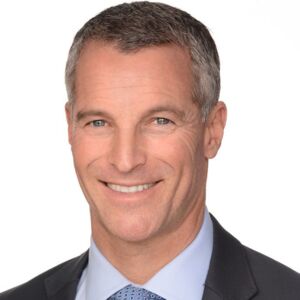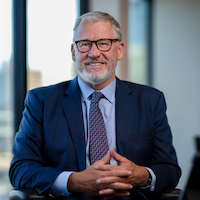AustralianSuper: Behind its turbocharged recruitment
By Elizabeth Fry

Australia Super is accelerating its hiring plans as it manages more assets in-house and builds offshore offices to push further into private markets.
The move to internalise and the drive to boost foreign assets comes as the nation's largest pension fund closed the financial year with a negative annual return of 2.7 per cent, showing it is not immune to the market turmoil.
The shift from economic growth to slowdown has seen the fund adjust to a more defensive strategy as the outlook darkens for growth asset classes such as listed equities shares, says Alistair Barker, AustralianSuper's head of total portfolio management.
"We were concerned that there would have to be a tightening of monetary conditions and a rise in interest rates since it had been such a long time since we had seen a decent recession and labour markets were running out of capacity," he says.
"So, on that basis, we had very little exposure to interest rates and duration coming into this period. Our prime portfolio action was to reduce the sensitivity of portfolios to rising interest rates."
Importantly the $261 billion superannuation giant is actively looking for private market opportunities, albeit selectively.
Unsurprisingly, opportunities vary in such volatile markets. "There is still a lot of demand for attractive infrastructure investment and certainly, in some property investments like logistics," he says.
This year has brought new pressures on venture-related investments. Barker points to the collapse of neobank Volt as what can happen when running a negative cash flow business when interest rates are rising.
"There is less plentiful capital for start-ups and venture-related companies, so that part of the market is more troubled."
More than half of the fund is already invested offshore, including in UK assets such as London's Heathrow airport the King's Cross redevelopment project and Canada Water.
"A lot of the hiring in the offshore offices has been to boost internal capabilities to support our investments in UK property, private equity and infrastructure.
The fund has also bolstered its capital markets team, our trading capabilities, and back-office support, particularly in London." Operating a 24/5 operation is a substantial benefit for a global portfolio."
As part of its global expansion, AustralianSuper will boost its London staff from 50 to 100 and has 15 currently in New York.
Managing in-house
But the recruitment drive is not really about AustralianSuper's giant push offshore, but internalisation.
Some question the validity of the hybrid model where funds reap the benefit of internalisation but actively manage some portfolios.
But imperfect or not, Barker believes the fund can deliver extra return through active investing where it can do a better job than external specialists.
"We believe there is real power in having multiple people adding value to the portfolio. "Diversification is one of the few free lunches you get in investing and it applies to strategy as much as to asset allocation."
What makes internalisation resource-heavy is that AustralianSuper must hold investment staff to the same standard as the fund's external managers.
Consequently, a lot more resources are being funnelled into the team that oversees the people managing the money.
"It's all well and good to generate cost savings from internalisation, but we need proper oversight of our internal teams to ensure performance."
In essence, he notes, there are now two roles in portfolio management, One is working in a portfolio; the other is working on a portfolio.
Keeping it simple
It has been clear for a while that internalisation coupled with tremendous growth in annual cash flow adds complexity to the investment process.
Barker concedes that size can add to complexity but argues that investment is still a simple concept,
"Even though there can be more line items in the portfolio to sift through. There is only a handful of things that drive returns at any given time."
Looking at overall portfolios are positioned still requires simplicity.
"Having people who can distil all the activity into a few crisp investment ideas and themes is critical.
"If there is too much complexity, the risk is you have a 'forest for the trees' view of the world.
"That's why we look at what everyone is doing and discern what's important, avoiding a situation where complexity clouds the key drivers of returns."
He says the fund's single objective of reducing the exposure to interest rates and duration at a total portfolio level is central to what's known as the total portfolio approach.
Joined up approach
A total portfolio approach (TPA) eliminates distractions as everyone has an eye on the main goal rather than on a particular strategic asset allocation.
"Duration comes in many forms," Barker explains." It's not just whether we hold government bonds. There is the embedded duration in the equity market, and we see it in unlisted assets so trying to aggregate up what everyone is doing and see how we are positioned at a macro level is critical."
"Otherwise, you could end up with opposing positions in a multi-manager hybrid model or with a concentration of positions, too much risk in one area or with one view of the world".
TPA works best when internal teams have grown big, and portfolio construction has become more complex.
A critical feature of TPA is the real-time competition for capital among all asset classes. Anyone can suggest an opportunity that they think will improve the risk-adjusted outcome for the portfolio, and the budget can come from any bucket.
"Allocating capital to groups and then seeing what people are doing with that capital means you are in a constant process of people asking for more budget."
Importantly, Barker measures the contribution of each team to the overall portfolio.
He adds that the fund has one core objective to deliver returns at an investment option level.
"None of our members retires because of what happens with Australian equities but the collective outcome, not individual assets."
Moreover, the team shares accountability for the outcome.
Not everyone likes TPA as often specialists who take on more risk expect more pay. This is one reason why so few asset owners have adopted TPA.
"I know people feel that, and I've heard that line of argument that individually based remuneration is what people connect with the most," he says.
"But remuneration on a collective outcome tends to be more reliable as you have the power of diversification.
And culturally, I think it adds to a place where people talk and corporate and share ideas, so it is more collegiate, which fits with the values of the fund,
"If you want to be paid on individual performance, that's not the organisation we aspire to be".
Outlook
In terms of the outlook, Barker will say everyone in the world wants to know when inflation will peak since this is the greatest uncertainty for investors.
"It will peak when policymakers think enough action has been taken. As far as the investment environment is involved, we are in fascinating and troubling times.
"It is the first time in quite a long while there we have got substantial inflation, and central banks are aggressively tightening to control it. People worry whether it will cause a recession."
Annual inflows of $24 billion give AustralianSuper a major strategic fillip.
"As annoying and stressful as market falls are, they provide an opportunity for people with a long working life ahead of them to build wealth by buying at cheaper entry points."



